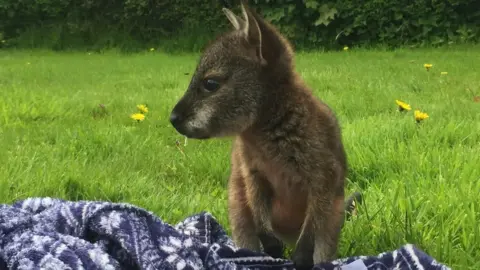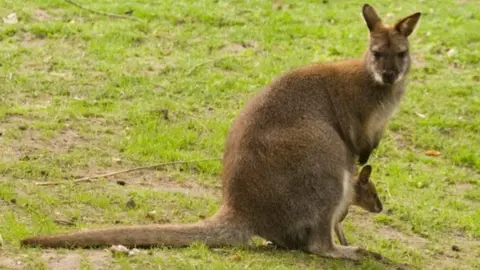Orphaned Isle of Man wallaby 'getting stronger'
 Ruth Cormode
Ruth CormodeA vet tasked with hand-rearing a baby wallaby after it was found by its dead mother's side in the Isle of Man has said the animal is "doing very well".
The seven-month-old joey was spotted and reported to a vet by a couple walking in the Curraghs on 28 April.
It is the first time Jane Callow's practice has attempted to hand-rear a wallaby.
A spokeswoman for the practice said the marsupial was now feeding on soft fruit, grass and dandelions.
She said: "We were scared as it is a first for us, but he is doing very, very well."
More than 100 red-necked wallabies are living wild in the Manx countryside after a pair escaped from a nearby wildlife park half a century ago.
 Ruth Cormode
Ruth CormodeThe Curraghs Wildlife Park has agreed to take in the wallaby once it has fully recovered.
The animal - which has been named Jeremy - was first spotted by walkers Andrew and Diane Taylor who saw its mother was not moving.
Wallabies are native to Australia and are closely related to kangaroos, although about half the size.
Wildlife experts believe numbers on the Isle of Man are gradually increasing because they have no predators or competitors.
However, orphaned wallabies can not be released back into the wild as they are not classed as an indigenous species.

Red-necked wallabies
 Other
Other- Closely related to kangaroos
- Greyish-brown fur with red patches on shoulders
- Usually solitary and active at dusk and night
- No natural predators
- Graze on grasslands, forage willow and young shrubs
